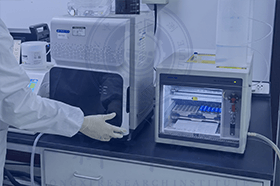检测信息(部分)
问题:电气性能检测主要针对哪些产品?
回答:电气性能检测涵盖各类电子电气设备及其组件,包括家用电器、工业设备、新能源产品、通信设备等,确保其符合安全、能效及电磁兼容性等标准。
问题:检测的主要目的是什么?
回答:检测旨在验证产品的电气安全、性能稳定性及合规性,降低使用风险,满足市场准入要求,并为产品优化提供数据支持。
问题:检测流程一般包括哪些步骤?
回答:流程通常分为样品接收、预处理、参数测试、数据分析、报告生成五个阶段,具体根据产品类型和标准要求调整。
检测项目(部分)
- 绝缘电阻:评估材料绝缘性能,防止漏电风险。
- 耐压强度:检测介质在高电压下的击穿承受能力。
- 接地连续性:验证设备接地路径的可靠性。
- 泄漏电流:监测异常电流对用户安全的潜在影响。
- 功率因数:衡量电能利用效率。
- 温升测试:确认设备运行时温度是否符合限值。
- 电磁兼容(EMC):评估设备抗干扰及干扰他设备的能力。
- 谐波分析:检测电流波形畸变对电网的影响。
- 输入输出特性:验证设备额定参数与实际性能的一致性。
- 瞬态过电压:模拟突发电压冲击下的设备稳定性。
- 介电损耗:反映绝缘材料能量损耗程度。
- 接触电阻:测量导体连接处的导电效率。
- 工作频率响应:分析设备在不同频率下的性能变化。
- 短路保护:测试故障电流触发保护装置的灵敏度。
- 能效等级:评定产品能源消耗水平。
- 启动特性:记录设备通电初期的电流与电压波动。
- 耐久性测试:模拟长期使用后的性能衰减情况。
- 静电放电(ESD):评估抗静电干扰能力。
- 浪涌抗扰度:测试设备对瞬时高压脉冲的耐受性。
- 电压波动适应性:验证供电不稳时设备的运行稳定性。
检测范围(部分)
- 家用电器
- 工业控制设备
- 新能源汽车部件
- 光伏逆变器
- 电池及充电设备
- LED照明产品
- 信息技术设备
- 医疗电子仪器
- 低压开关柜
- 电线电缆
- 电源适配器
- 电机与变压器
- 电动工具
- 安防监控设备
- 通信基站设备
- 消费类电子产品
- 轨道交通电气部件
- 智能家居设备
- 航空航天电子元件
- 可再生能源发电系统
检测仪器(部分)
- 耐压测试仪
- 绝缘电阻测试仪
- 示波器
- 频谱分析仪
- 电参数测量仪
- 高低温试验箱
- EMC测试系统
- 接地电阻测试仪
- 功率分析仪
- 谐波分析仪
检测标准(部分)
本标准适用于印制电路用刚性覆铜箔层压板和粘结片。
本标准适用于印制电路用挠性覆铜箔层压板、覆盖层和粘结材料。
— resilient floor coverings (such as those manufactured from plastics linoleum or rubber);
— textile floor coverings.
Adhesives for floor coverings are intended for use within a building according to the manufacturer’s specification.
This document specifies requirements for establishing performance characteristics of adhesives for
floor coverings with regard to their determination evaluation and expression.
This document comprises all kinds of adhesives for floor coverings irrespective of the chemical
composition and the mechanism of setting. Products according to this document can be put on the
market as liquids pastes and film adhesives for floor coverings. The products can be one-component or multi-component.
This document also defines a special kind of adhesives for floor coverings which facilitate the easy
removal of the floor covering after the utilization and where the need for a permanent bond is not
always required. These types of floor covering adhesives are referred to as low peel strength release
bond adhesives.
This document does not:
— cover adhesives for bonding parquet to the subfloor adhesives for bonding laminate floor coverings and adhesives for ceramic tiles;
— make provisions for testing the bond strength of low peel strength release bond adhesives for floor coverings;
— take account of all influences which may occur in practice.
It is the intent of these procedures to provide recognized methods for testing and reporting the electrical performance of photovoltaic modules and arrays.
The test results may be used for comparison of different modules or arrays among a group of similar items that might be encountered in testing a group of modules or arrays from a single source. They also may be used to compare diverse designs such as products from different manufacturers. Repeated measurements of the same module or array may be used for the study of changes in device performance.
Measurements may be made over a range of test conditions. The measurement data are numerically translated from the test conditions to standard RC to nominal operating conditions or to optional user-specified reporting conditions. Recommended RC are defined in Table 1.
If the test conditions are such that the device temperature is within x00B1;2x00B0;C of the RC temperature and the total irradiance is within x00B1;5 % of the RC irradiance the numerical translation consists of a correction to the measured device current based on the total irradiance during the I-V measurement.
If the provision in 5.3.1 is not met performance at RC is obtained from four separate I-V measurements at temperature and irradiance conditions that bracket the desired RC using a bilinear interpolation method.
There are a variety of methods that may be used to bracket the temperature and irradiance. One method involves cooling the module under test below the reference temperature and making repeated measurements of the I-V characteristics as the module warms up. The irradiance of pulsed light sources may be adjusted by using neutral density mesh filters of varying transmittance. If the distance between the simulator and the test plane can be varied then this adjustment can be used to change the irradiance. In natural sunlight the irradiance will change with the time of day or if the solar incidence angle is adjusted.
These test methods are based on two requirements.
First the reference cell (or module see 1.1.1 and 4.3.4) is selected so that its spectral response is considered to be close to the module or array to be tested.
Second the spectral response of a representative cell and the spectral distribution of the irradiance source must be known. The calibration constant of the reference cell is then corrected to account for the difference between the actual and the reference spectral irradiance distributions using the spectral mismatch parameter which is defined in Test Method E 973
Terrestrial reference cells are calibrated with respect to a reference spectral irradiance distribution for example Tables G 173.
A reference cell made and calibrated as described in 4.3 will indicate the total irradiance incident on a module or array whose spectral response is close to that of the reference cell.
With the performance data determined in accordance with these test methods it becomes possible to predict module or array performance from measurements under any test light source in terms of any reference spectral irradiance distribution.
The reference conditions of 5.3.1 must be met if the measured I-V curve exhibits x201C;kinksx201D; or multiple inflection points.
TABLE 1 Reporting Conditions
| Total Irradiance Wm............
【中国标准分类】 F12 能源 【国际标准分类】 27.160-太阳能工程
国外标准 ASTM E1036-2002 使用标准电池的非聚能地面光电模件和阵列电气性能的标准试验方法
【适用范围】
1.1 These test methods cover the electrical performance of photovoltaic modules and arrays under natural or simulated sunlight using a calibrated reference cell. 1.2 Measurements under a variety of conditions are allowed; results are reported under a select set of reporting conditions (RC) to facilitate comparison of results. 1.3 These test methods apply only to nonconcentrator terrestrial modules and arrays. 1.4 The performance parameters determined by these test methods apply only at the time of the test and imply no past or future performance level. 1.5 There is no similar or equivalent ISO standard. 1.6 This standard does not purport to address all of the safety concerns if any associated with its use. It is the responsibility of the user of this standard to establish appropriate safety and health practices and determine the applicability of regulatory limitations prior to use. 【中国标准分类】 F12 能源 【国际标准分类】 27.160-太阳能工程 国外标准 ASTM E1036-2012 塑料试验方法.第2部分 :电气性能.方法241A聚氯乙烯混合物对聚乙烯损耗角正切向影响测定
【适用范围】Describes a procedure for assessing the tendency of plasticized polyvinyl chloride compound to migrate into polyethylene materials with which it is in contact causing an increase in the loss tangent of the polyethylene.
【中国标准分类】 G31 合成材料 【国际标准分类】 83.080.20-热塑性塑料 国外标准 BS 4331-2-1972 超声波探伤设备性能评定方法.第2部分:电气性能
【适用范围】
【中国标准分类】 M74 试验给予无损探伤仪器 【国际标准分类】 33.120.40-天线 国外标准 BS 7825-3.2-1997 橡胶和塑料试验设备的校准.校准一览表.电气性能
【适用范围】Provides schedules and guidance for the calibration of equipment and materials for a range of methods of tests for evaluating the electrical properties of plastics and rubber materials.
【中国标准分类】 G31 合成材料 【国际标准分类】 83.200-橡胶和塑料工业设备 国外标准 BS EN 14259-2003 地板覆盖物用胶粘剂.机械性能和电气性能的要求
【适用范围】This European Standard specifies performance requirements of an adhesive when tested to a standard method with a characteristic type of floor covering. The values defined in this standard are considered to indicate a general suitability for use of an adhesive with the corresponding group of floor coverings. This standard can also be used for the evaluation of a particular floor covering with the corresponding type of adhesive. This standard does not contain criteria or recommendations for the practical installation of floor coverings. The values given in this standard also do not guarantee the complete functionality of combinations of adhesives and floor coverings in practical application.
【中国标准分类】 G38 合成材料 【国际标准分类】 83.180-粘合剂和胶粘产品 国外标准 BS EN 60851-5-2008 绕组线.试验方法.电气性能
【适用范围】This part of IEC 60851 specifies the following tests:n– Test 5: Electrical resistance;n– Test 13: Breakdown voltage;n– Test 14: Continuity of insulation;n– Test 19: Dielectric dissipation factor;n– Test 23: Pin hole.nFor definitions general notes on methods of test and the complete series of methods of testnfor winding wires see IEC 60851-1.
【中国标准分类】 K12 电工材料和通用零件 【国际标准分类】 29.060.10-电线 国外标准 DIN ISO 10330-1996 摄影.相机和闪光灯装置的同步器.点火线路和连接器.电气性能和试验方法
【适用范围】
【中国标准分类】 A15 经济、文化 【国际标准分类】 37.040.10-摄影设备、投影仪 国外标准 DIN EN 13087-8-2005 防护头盔 试验方法 第8部分:电气性能
【适用范围】This European Standard describes methods of test for protective helmets. The purpose of these tests is to enable assessment of the performance of the helmet as specified in the appropriate helmet standard. This standard specifies the methods of test for electrical properties. Additional text from CENELEC excluding reference to EN 50365:2002. This standard cannot be used for establishing electrical requirements for live working or working in the vicinity of live parts or electrical installations.
【中国标准分类】 C73 劳动安全技术 【国际标准分类】 13.340.20-头部防护设备 国外标准 DIN 44402-1-1974 电子管电气性能测试. 测试方法准则.
【适用范围】Measurements of the electrical properties of electronic tubes and valves precautions relating to methods of measurementZusammenhang mit IEC-Publikation 151-0 Ausgabe 1966 siehe Erl?uterungen.Diese Norm enth?lt allgemeine Richtlinien die die Zuverl?s
【中国标准分类】 L35 电真空器件 【国际标准分类】 31.100-电子管 国外标准 DIN 44402-6-1972 电子管电气性能测试. 噪声系数的测试条件.
【适用范围】Measurement of the electrical properties of electronic tubes and valves; methods of measuring noise factorDiese Norm stimmt sachlich überein mit der IEC-Empfehlung 151-4 Ausgabe 1963.Measurements of the electrical properties of electronic tubes and val
【中国标准分类】 L35 电真空器件 【国际标准分类】 31.100-电子管 国外标准 DIN 44402-7-1973 电子管电气性能测试. 咝声与交流声的测试方法.
【适用范围】Measurements of the electrical properties of electronic tubes and valves; methods of measuring hiss and humDiese Norm stimmt sachlich überein mit der IEC-Publikation 151-5 Measurement of the electrical propertiesof electronic tubes and valves Part 5: Me
【中国标准分类】 L35 电真空器件 【国际标准分类】 31.100-电子管 国外标准 DIN 44402-8-1973 电子管电气性能测试. 当量噪声电阻的测量.
【适用范围】Measurements of the electrical properties of electronic tubes; measurement of equivalent noise resistanceDiese Norm stimmt sachlich überein mit der IEC-Publikation 151-7 Measurement of the electrical properties of elec-tronic tubes and valves Part 7: Me
【中国标准分类】 L35 电真空器件 【国际标准分类】 31.100-电子管 国外标准 DIN 44402-14-1971 电子管电气性能测试. 高真空管加热阴极的发射电流测试.
【适用范围】Measurements of electrical properties of electronic tubes methods of measurement of emission current from hot cathodes for high-vacuum electronic tubes and valvesDiese Norm stimmt sachlich überein mit der Empfehlung 151-13 Ausgabe 1966 Measurement of th
【中国标准分类】 L35 电真空器件 【国际标准分类】 31.100-电子管 国外标准 DIN 44402-16-1972 电子管电气性能测试. 电极故障电流的测试.
【适用范围】Measurements of the electrical properties of electronic tubes and valves; Methods of measurement of spurious and unwanted electrode currentsDiese Norm stimmt sachlich überein mit der Empfehlung 151-15 Ausgabe 1967 Measurement of the electricalproperti
【中国标准分类】 L35 电真空器件 【国际标准分类】 31.100-电子管 国外标准 DIN 44402-17-1973 电子管电气性能测试. 显象管的测试方法.
【适用范围】Measurements of the electrical properties of electronic tubes; methods of measurement for television picture tubesDiese Norm stimmt sachlich überein mit der Empfehlung 151-16 Ausgabe 1968 Measurement of the electrical properties of electronic tubes and
【中国标准分类】 L35 电真空器件 【国际标准分类】 31.120-电子显示器件 国外标准 DIN 44402-19-1973 电子管电气性能测试. 机械和声学噪声的测试.
【适用范围】Measurement of the electrical properties of electronic tubes; measurement of noises due to mechanical or acoustic excitationsDiese Norm stimmt sachlich überein mit der Empfehlung 151-18 1. Ausgabe 1968 Measurement of the electrical properties of electr
【中国标准分类】 L35 电真空器件 【国际标准分类】 31.100-电子管 国外标准 DIN 44402-20-1973 电子管电气性能测试.AM-AM转换时交叉调制的测试.
【适用范围】Measurement of the electrical properties of electronic tubes; measurement of cross-modulation in case of AM-AM transferDiese Norm stimmt sachlich überein mit der IEC-Empfehlung 151-21 Measurement of the electrical properties of electronic tubes Part 21:
【中国标准分类】 L35 电真空器件 【国际标准分类】 31.100-电子管 国外标准 DIN 44402-21-1976 电子管电气性能测试. 冷阴极指示管的测试方法.
【适用范围】Measurement of the electrical properties of electronic tubes; methods of measurement for cold cathode counting and indicator tubesDiese Norm stimmt sachlich überein mit der von der International Electrical Commission (IEC) herausgegebenen Empfeh-lung 151
【中国标准分类】 L35 电真空器件 【国际标准分类】 31.120-电子显示器件 国外标准 DIN V 46454-2-2006 微波管电气性能测量.第2部分:一般测量
【适用范围】This standard applies to the electrical properties of zero defect winding wires.
【中国标准分类】 L37 电真空器件 【国际标准分类】 31.100-电子管 国外标准 DIN EN 60851-5-2005 高频感应元件 非电气性能和测量方法 第1部分:电子系统和通信设备用固定面安装的感应器
【适用范围】
【中国标准分类】 N24 电工仪器仪表 【国际标准分类】 29.100.10-磁性元件 |
|---|

检测资质(部分)










检测优势
检测实验室(部分)



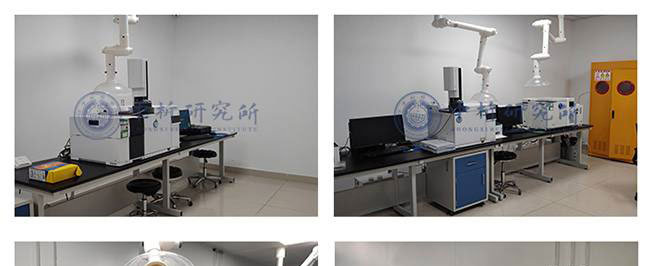
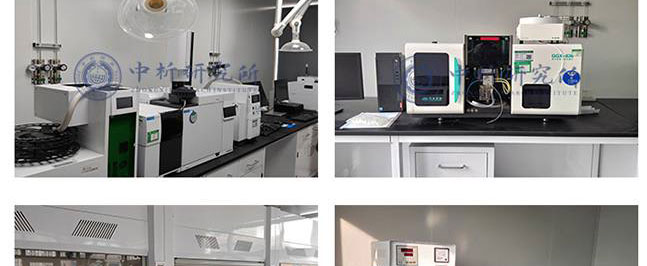
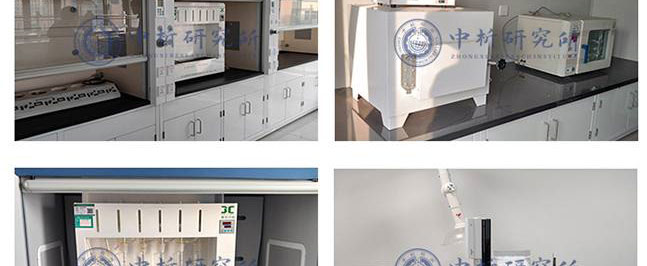
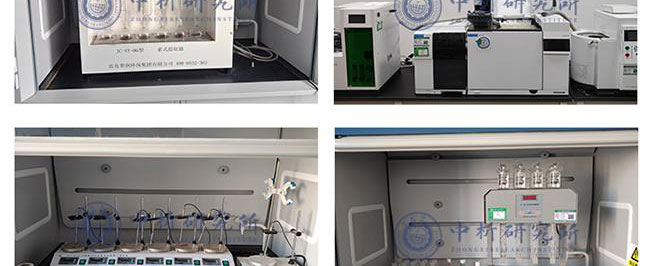
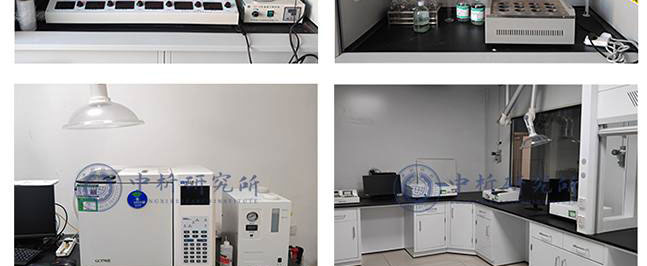
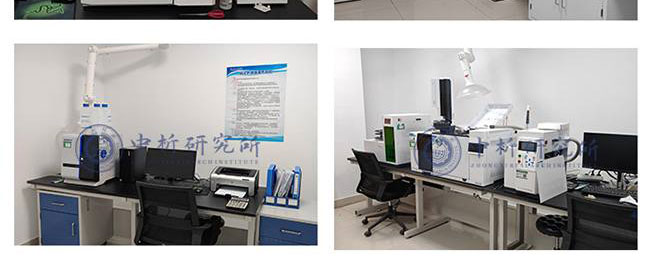
合作客户(部分)





检测报告作用
1、可以帮助生产商识别产品的潜在问题或缺陷,并及时改进生产工艺,保障产品的品质和安全性。
2、可以为生产商提供科学的数据,证明其产品符合国际、国家和地区相关标准和规定,从而增强产品的市场竞争力。
3、可以评估产品的质量和安全性,确保产品能够达到预期效果,同时减少潜在的健康和安全风险。
4、可以帮助生产商构建品牌形象,提高品牌信誉度,并促进产品的销售和市场推广。
5、可以确定性能和特性以及元素,例如力学性能、化学性质、物理性能、热学性能等,从而为产品设计、制造和使用提供参考。
6、可以评估产品是否含有有毒有害成分,以及是否符合环保要求,从而保障产品的安全性。
检测流程
1、中析研究所接受客户委托,为客户提供检测服务
2、客户可选择寄送样品或由我们的工程师进行采样,以确保样品的准确性和可靠性。
3、我们的工程师会对样品进行初步评估,并提供报价,以便客户了解检测成本。
4、双方将就检测项目进行详细沟通,并签署保密协议,以保证客户信息的保密性。在此基础上,我们将进行测试试验.
5、在检测过程中,我们将与客户进行密切沟通,以便随时调整测试方案,确保测试进度。
6、试验测试通常在7-15个工作日内完成,具体时间根据样品的类型和数量而定。
7、出具检测样品报告,以便客户了解测试结果和检测数据,为客户提供有力的支持和帮助。
以上为电气性能检测的检测内容,如需更多内容以及服务请联系在线工程师。








